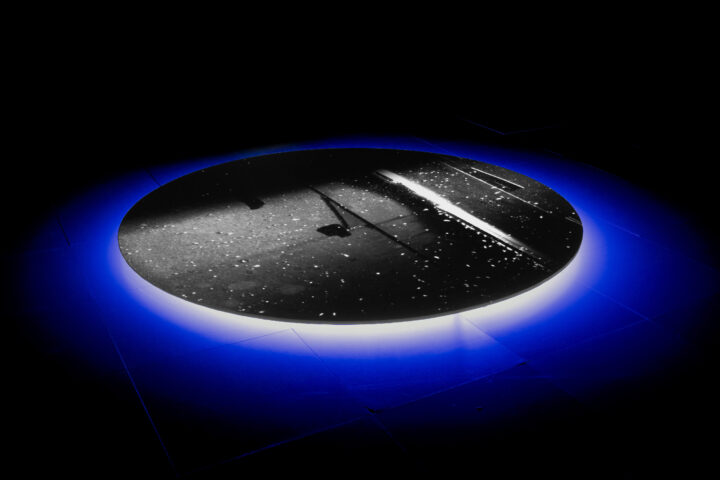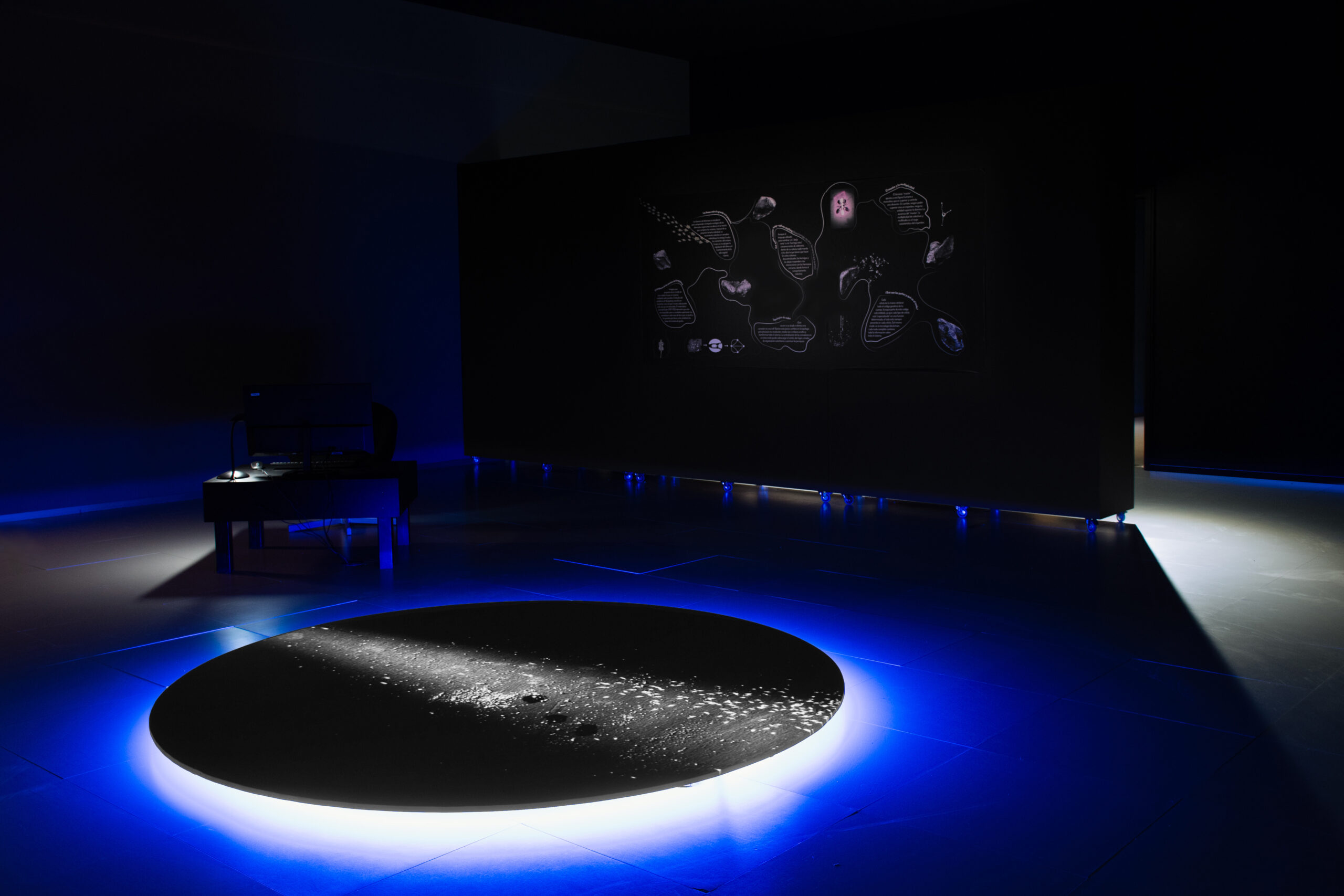
Networked Play, Decentralised Futures, ETOPIA Centre for Art and Technology, view of the exhibition, 2024.
Networked Play explores the intersection of collective behaviour in living systems, network topologies, and philosophical inquiries. In its initial form, it presents a video, a vinyl map, and an online game, whose narrative centres around the task of guiding brine shrimp (a.k.a. Artemia) to mix in the ocean, bringing up a reflection about our individual role within a larger collective context.
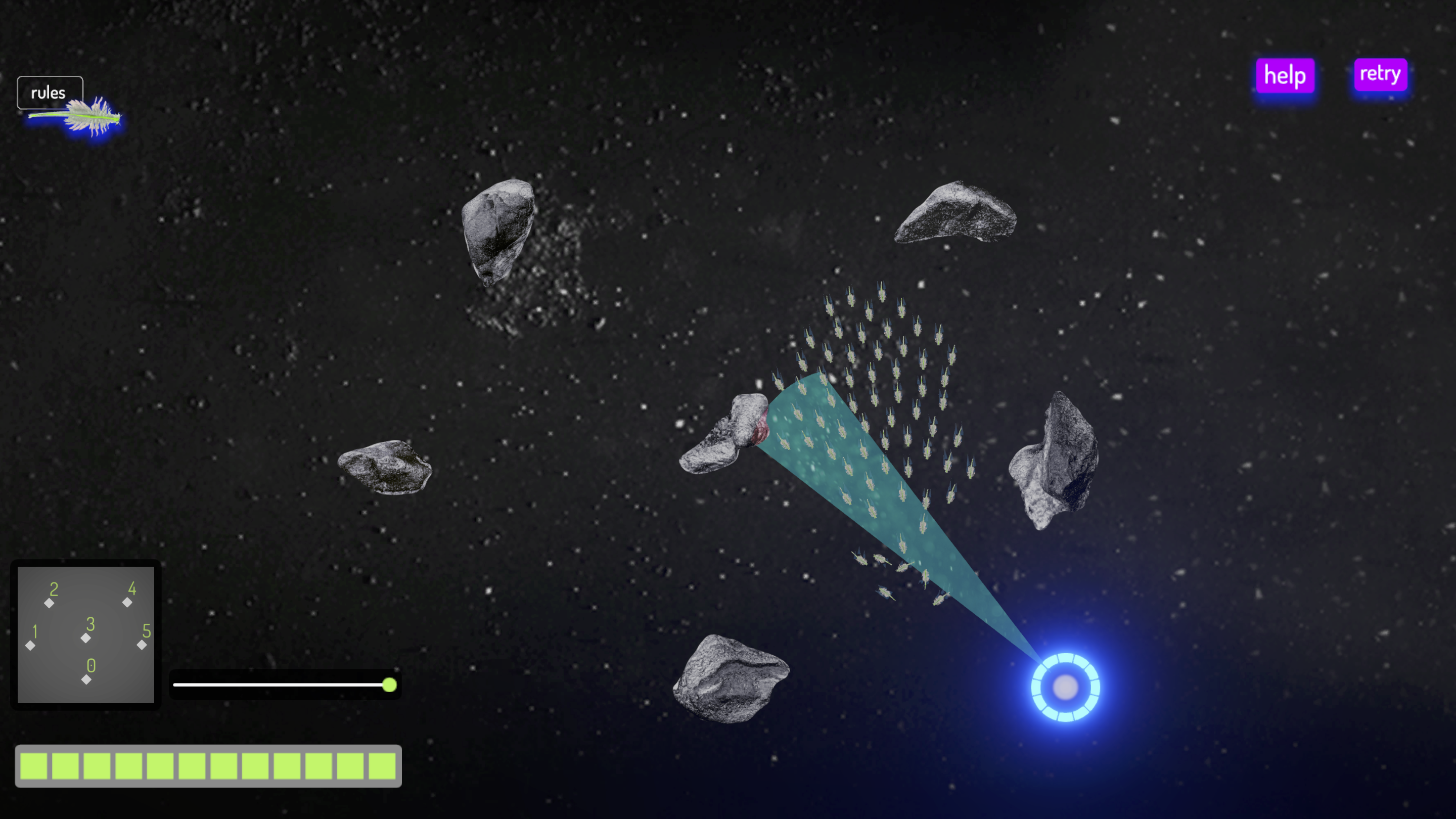
Schools of brine shrimp were studied in researching the ecological impact that tiny aquatic organisms may have in mixing the ocean waters. Although their size as individuals has little impact on their surroundings, their collective swirling motion helps to redistribute energy, salt, and nutrients throughout the layers of the ocean. This process plays an important role in regulating the climate and creating the marine plant life upon which many species depend for food.
Brine shrimp are naturally drawn towards sources of light. This tendency allows scientists to manipulate their collective movement by controlling light sources such as lasers or LEDs. However, within their group, nobody is telling the Artemias where to go or what to do. Instead, they self-organise to reach their common target. They navigate and adjust their paths, ensuring they avoid collisions with each other along the way.
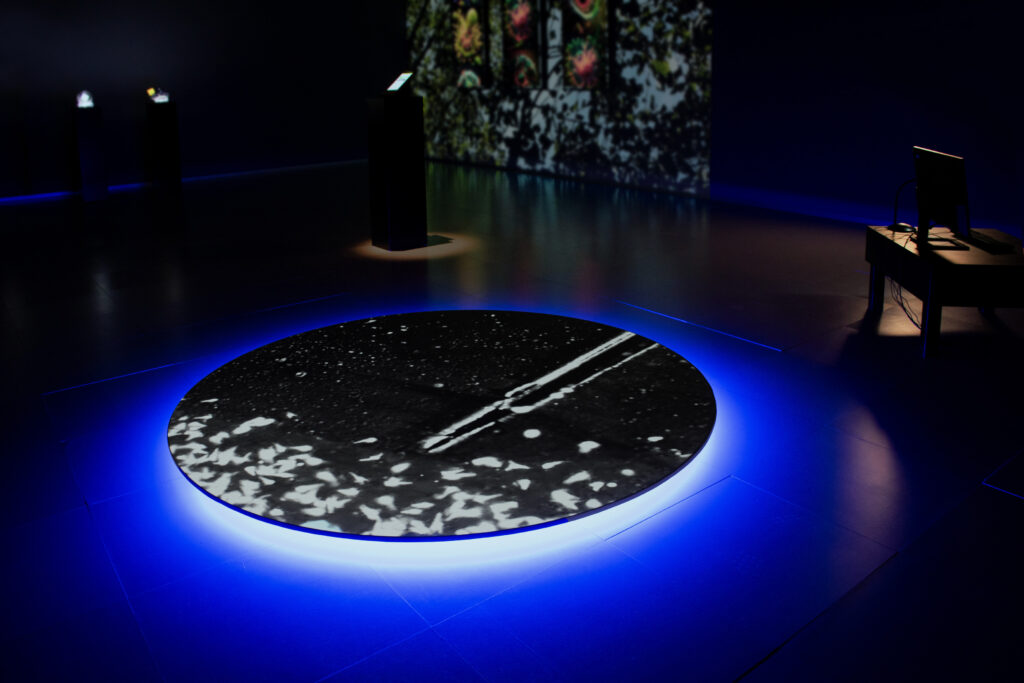
In the online game, players connect as the master in a network of brine shrimp. They move towards the light, whose position and extent are controlled by the master. The mission is to guide the Artemias toward six different rocks and make them complete a circuit without backtracking—a reference to ‘Konigsberg bridge problem’, the underpinnings of graph theory.
Throughout this journey, the master is confronted with a dilemma in their mission: they can control the swarm of Artemias attracting them with their light, but it is the same light that casts a shadow when pointed to a rock — preventing the group from reaching their target. To accomplish this task, the master will have to pass their (en)lightening power onto the rocks, so that these irradiate light themselves and the Artemias can thus go towards them.
A surprise is awaiting those who accomplish the mission.
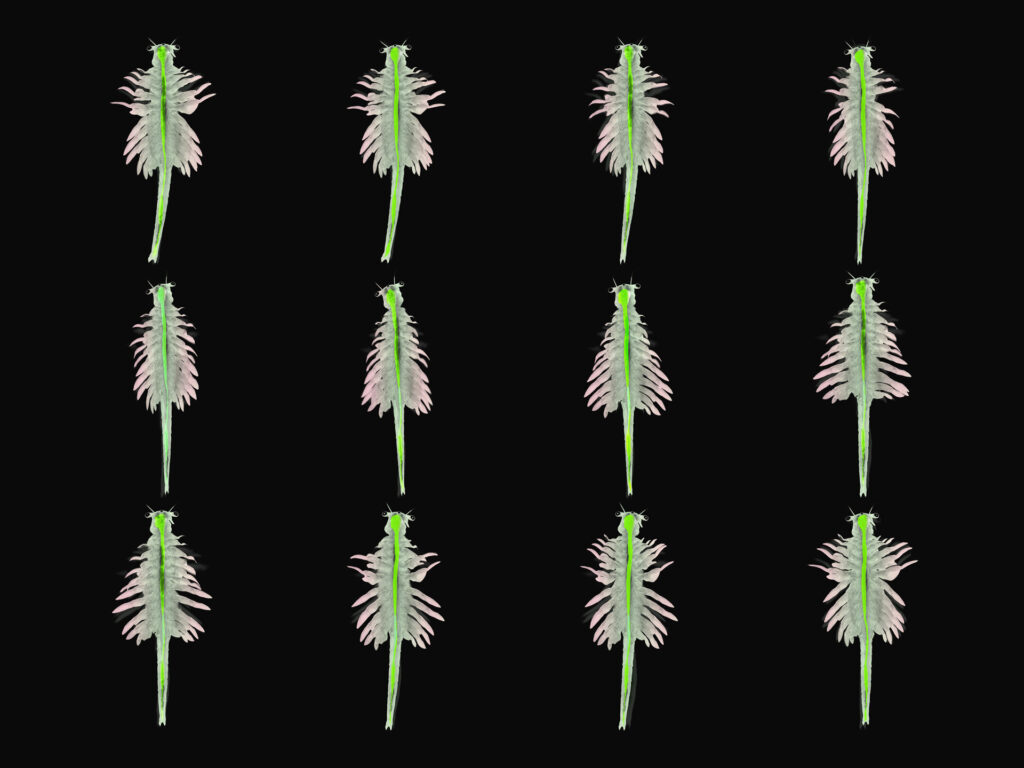
Faced with colossal problems, such as the planetary environmental crisis, wars, and mass migration, people start to doubt how much they, as individuals, can really do. It is mainly this presumed sense of disproportion between what concerns the individual and what burdens the collective that generates a widespread feeling of impotence in relation to the issues of the world. Individuals often feel exempted from their responsibilities to the whole, as the problems seem to be too big and distant for their actions to make a difference.
The scope of making the Artemias move towards the light and completing the circuit symbolically represents churning the waters in the ocean ( or the fluid in the space ). It refers to the notion that within a network, the collective effect is greater than the sum of its parts. Just as the movement of Artemias collectively alters their environment, our interconnected actions as individuals generate amplified effects on the planet.
In a collaboration with Dr. Prof. Tobias Seidl (Westfälisches Institut für Bionik, Bocholt, Germany) and Claudia Kruschel (Marine ecologist, Berlin, Germany), Paula Nishijima has researched into the swarming behaviour of Artemias, which originated the framework for the ludo-narrative of Networked Play’s online game. The footage of the experiments performed with Artemias in the lab were used for a video installation.
Credits
Co-funded by the European Union and Supported by ARTeCHÓ, initiative created by SERN – Startup Europe Regions Network (Belgium), Baltan Laboratories (Netherlands), FZC-Etopia Center for Art & Technology (Spain), Frankfurt School Blockchain Center (Germany) and MEET Digital Cultural Center (Italy).
Concept & visuals: Paula Nishijima
Game Design: Paula Nishijima & León Fenzl
Game & web development: León Fenzl
Scientists collaborators: Dr. Prof. Tobias Seidl (Westfälische Hochschule, Bocholt, Germany) & Claudia Kruschel (Marine ecologist, Berlin, Germany)
Sound design re-mixed from ‘Logic Moon’ (freesound.org)
